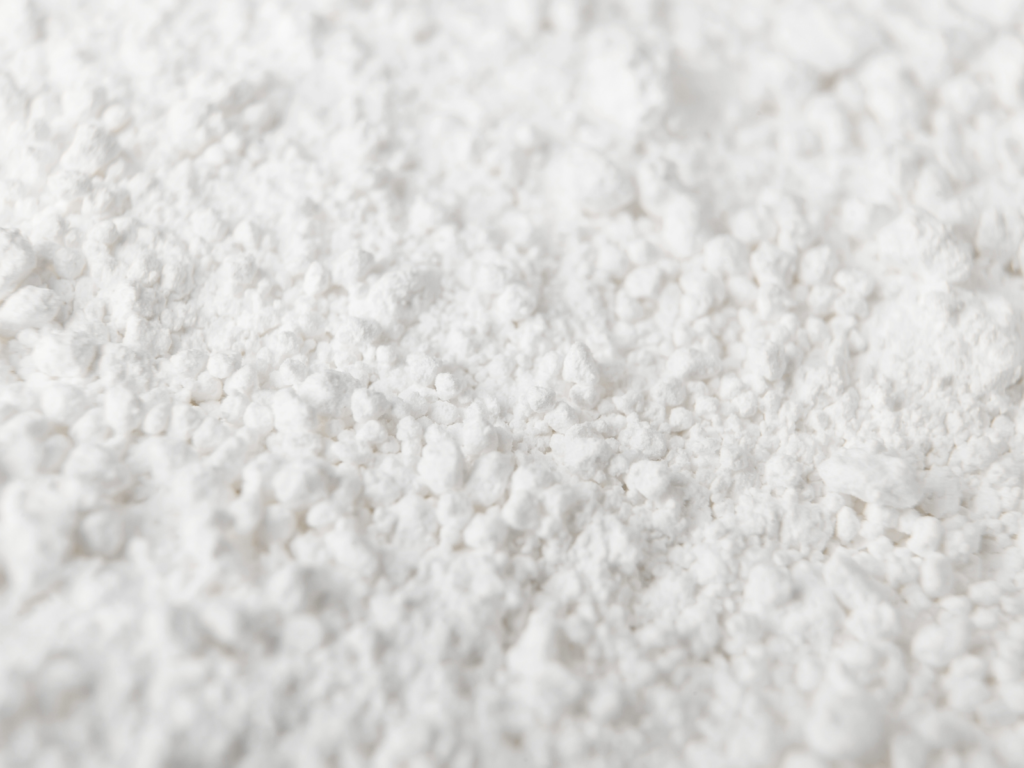Sodium Carboxymethyl Cellulose (CMC), a derivative of cellulose, is an anionic water-soluble polymer. It is produced by reacting cellulose with sodium hydroxide and chloroacetic acid, resulting in a compound with unique properties. Sodium CMC is known for its high viscosity, non-toxic nature, and excellent solubility in both hot and cold water. These characteristics make it highly valuable in various industries, including pharmaceuticals.
Chemically, Sodium CMC is characterized by its long chains of cellulose, which are substituted with carboxymethyl groups (-CH2-COOH). This substitution enhances its solubility and contributes to its ability to absorb water, leading to its use as a thickening agent. Its molecular structure also allows for customization in viscosity and degree of substitution, tailoring it to specific applications.
Sodium CMC was first synthesized and used in the 1920s. However, its potential in pharmaceutical applications was recognized later, around the mid-20th century. Initially, it was used in the food industry as a stabilizer and thickener, but researchers soon discovered its beneficial properties in drug formulation.
The introduction of Sodium CMC into the pharmaceutical industry marked a significant advancement, particularly in drug delivery systems. Its non-reactive nature ensures that it does not interfere with the active pharmaceutical ingredients (APIs) in medications. Additionally, its ability to swell and create gels upon contact with water made it an ideal component in controlled-release drug formulations.
Early pharmaceutical applications of Sodium CMC included its use as a binder in tablet manufacturing, improving the integrity and shelf-life of pills. It was also used in liquid suspensions to stabilize the formulation and prevent the settling of active ingredients. The progression in research led to more sophisticated uses, such as in ocular solutions where its lubricating properties improved patient comfort and medication efficacy.
Chemical and Physical Properties of Sodium CMC
Detailed Analysis of its Molecular Structure
Sodium Carboxymethyl Cellulose (CMC) is a chemically modified form of cellulose, the most abundant organic polymer on Earth. The structure of CMC is characterized by the substitution of hydroxyl groups (-OH) in the cellulose backbone with carboxymethyl groups (-CH2-COOH). This substitution is achieved through a process called etherification, where cellulose reacts with sodium hydroxide and chloroacetic acid.
The degree of substitution (DS), which refers to the average number of hydroxyl groups replaced per glucose unit in the cellulose chain, is a crucial parameter in defining the properties of CMC. A higher DS leads to increased solubility in water and affects other properties like viscosity. The molecular weight of CMC can also vary, influencing its physical characteristics.
Discussion on its Solubility, Viscosity, and Stability Features
Solubility: Sodium CMC is highly soluble in water due to the presence of carboxymethyl groups, which introduce negative charges along the polymer chain. These charges repel each other, causing the chain to unfold and dissolve in water. Its solubility is affected by the DS; higher DS typically results in greater solubility. It’s important to note that Sodium CMC is not soluble in organic solvents.
Viscosity: The viscosity of Sodium CMC solutions is one of its most significant properties. It is a thickening agent and can produce a wide range of viscosities depending on its concentration and molecular weight. Viscosity increases with higher concentrations and higher molecular weights. This property is critical in pharmaceuticals, where control over the flow properties of liquids and gels is essential.
Role as a Thickening Agent
How Sodium CMC Enhances the Texture and Consistency of Pharmaceutical Products
Sodium Carboxymethyl Cellulose (CMC) plays a critical role as a thickening agent in pharmaceutical formulations. Its ability to increase the viscosity of a liquid or semi-solid product is paramount in achieving the desired texture and consistency, which are crucial for both the efficacy and patient acceptability of the medication.
- Enhancing Viscosity and Texture: When dissolved in water, Sodium CMC swells and forms a viscous colloidal solution. This property is essential in products like syrups, creams, and gels, where a thicker consistency is needed for ease of use, accurate dosing, and effective application. For instance, in oral suspensions, it helps to uniformly suspend active ingredients, preventing them from settling.
- Controlled Release: In tablet formulations, Sodium CMC can control the release of the active ingredient. Its viscous nature slows down the dissolution process, allowing for a sustained release of medication over an extended period.
- Stabilizing Agent: Beyond thickening, Sodium CMC also acts as a stabilizer, preventing the separation of ingredients in emulsions and suspensions. This stability is crucial for maintaining the consistency and effectiveness of the product throughout its shelf life.
Comparisons with Other Thickening Agents
Sodium CMC is often compared with other thickening agents like Xanthan Gum, Methylcellulose, and Alginate, each having its own unique properties:
- Xanthan Gum: This is a polysaccharide like Sodium CMC but is produced by bacterial fermentation. While also effective in thickening and stabilizing, Xanthan Gum is more shear-thinning, meaning it becomes less viscous under shear stress (like shaking or stirring), which can be beneficial in some applications.
- Methylcellulose: Another cellulose derivative, it gels upon heating, unlike Sodium CMC, which thickens upon cooling. Methylcellulose is often used in applications where thermal gelation is required.
- Alginate: Derived from seaweed, Alginate forms gels in the presence of calcium ions. It is excellent for creating gels with different textures but is not as effective as Sodium CMC in terms of thickening.

Importance in Drug Formulation and Delivery
Sodium Carboxymethyl Cellulose (CMC) plays a crucial role in drug formulation and delivery within the pharmaceutical industry. Its versatility and unique properties contribute significantly to the development of various pharmaceutical products, including tablets, capsules, and liquid medicines. Additionally, Sodium CMC is instrumental in achieving controlled and sustained drug release, optimizing therapeutic outcomes for patients. Here’s an examination of its importance in these aspects:
Formulation of Tablets, Capsules, and Liquid Medicines
- Tablets:
- Binder: Sodium CMC serves as an effective binder in tablet manufacturing. It improves the cohesion and compressibility of the tablet’s powdered ingredients, ensuring that the tablet maintains its shape and integrity.
- Disintegrant: In some formulations, Sodium CMC can also act as a disintegrant. It facilitates the rapid breakup of the tablet when it comes into contact with liquid in the gastrointestinal tract, aiding in drug absorption.
- Capsules:
- Filler: In capsule formulations, Sodium CMC is often used as a filler. It helps maintain the volume and consistency of the capsule content while ensuring even distribution of the drug.
- Liquid Medicines:
- Stabilizer and Thickener: In liquid medicines such as syrups and suspensions, Sodium CMC acts as a stabilizer and thickener. It prevents the settling of solid particles and ensures uniform distribution of the drug throughout the product. This is particularly important for accurate dosing.
Role in Controlled and Sustained Release of Drugs
- Controlled Release Tablets:
- Sodium CMC is used in controlled-release tablets to modulate the release of the active pharmaceutical ingredient (API) over an extended period. By forming a gel matrix, it retards the dissolution of the drug, resulting in a slower release rate. This is advantageous for drugs that require a prolonged duration of action, reducing the frequency of dosing.
- Sustained Release Formulations:
- In sustained-release formulations, Sodium CMC plays a vital role in creating delivery systems that release the drug gradually and consistently. This is achieved by controlling the swelling and erosion of the dosage form, allowing for continuous drug release. Patients benefit from reduced side effects and improved compliance with less frequent dosing.
The precise control over drug release kinetics, achieved through the incorporation of Sodium CMC, is of utmost importance in pharmaceutical development. It enables the design of dosage forms tailored to the specific requirements of the drug and the therapeutic needs of patients. This ensures not only the efficacy of the medication but also enhanced patient comfort and adherence to treatment regimens. As a result, Sodium CMC continues to be an indispensable component in the pharmaceutical industry, contributing to the advancement of drug formulation and delivery technologies.
Application in Topical Medications
Sodium Carboxymethyl Cellulose (CMC) plays a significant role in the formulation of topical medications, including creams, gels, and ointments. Its unique properties contribute to the effectiveness and user-friendliness of these products, enhancing both skin absorption and drug efficacy. Here’s an overview of its applications and benefits in topical medications:
Usage of Sodium CMC in Creams, Gels, and Ointments
- Creams:
- Emulsion Stabilization: Sodium CMC acts as an emulsifying agent in creams, ensuring that oil and water-based ingredients remain well mixed. This results in a smooth and homogenous texture, improving the application experience.
- Viscosity Control: It helps control the viscosity of creams, allowing them to spread easily on the skin without being too runny. This property is essential for even application.
- Gels:
- Thickening Agent: Sodium CMC serves as a thickening agent in gel formulations, providing the desired consistency for topical application. It enhances the gel’s ability to adhere to the skin and stay in place.
- Ointments:
- Stabilization: In ointments, Sodium CMC helps stabilize the formulation, preventing the separation of oil and water components. This ensures that the ointment remains uniform and effective throughout its shelf life.
- Enhanced Texture: It contributes to the texture of ointments, making them smoother and more easily spreadable. This is particularly important for products that need to be applied to sensitive or irritated skin.
Benefits for Skin Absorption and Drug Efficacy
- Improved Skin Absorption: Sodium CMC enhances the bioavailability of drugs in topical medications. Its ability to form a protective film on the skin’s surface helps slow down the evaporation of water from the formulation. This extended contact time between the drug and the skin enhances absorption, allowing for better penetration of active ingredients.
- Reduced Irritation: Sodium CMC can act as a barrier between the skin and potentially irritating or sensitizing ingredients in topical medications. This can help reduce skin irritation and improve patient comfort.
- Enhanced Drug Release: In certain formulations, Sodium CMC can be used to control the release of drugs into the skin over time. This sustained release can prolong the therapeutic effect of the medication and reduce the need for frequent reapplication.
- Moisturizing Effect: Sodium CMC has humectant properties, meaning it can attract and retain moisture. This can help keep the skin hydrated, which is particularly important in skincare products.
Sodium CMC in Eye Care Products
Sodium Carboxymethyl Cellulose (CMC) is a key ingredient in various eye care products, particularly artificial tears and other ophthalmic solutions. Its role in these products significantly impacts both comfort and therapeutic effectiveness for individuals with dry eyes and various ocular conditions. Here’s an overview of Sodium CMC’s contributions in eye care:
Role in Artificial Tears and Ophthalmic Solutions
- Lubrication and Moisturization:
- Sodium CMC serves as a lubricating agent in artificial tears, providing a protective and moisturizing film on the surface of the eye. This lubrication mimics the natural tear film and helps alleviate the discomfort associated with dry eyes.
- Viscosity Control:
- In ophthalmic solutions, Sodium CMC is used to control the viscosity of the product. This ensures that the solution remains in contact with the eye’s surface for an extended period, enhancing its therapeutic effects.
- Stabilization:
- Sodium CMC stabilizes ophthalmic formulations by preventing the settling of active ingredients and particles. This ensures that the concentration of therapeutic agents remains consistent throughout the product’s shelf life.
- Compatibility:
- Sodium CMC is biocompatible and non-irritating to the ocular surface. It is well-tolerated by most individuals and can be used in both prescription and over-the-counter eye care products.
Impact on Comfort and Therapeutic Effectiveness
- Comfort:
- The lubricating properties of Sodium CMC in artificial tears provide immediate relief to individuals suffering from dry eyes. It reduces the sensation of grittiness, burning, and discomfort associated with dry eye syndrome, allergies, or environmental factors.
- Sodium CMC’s ability to form a protective film on the eye’s surface also reduces friction between the eyelid and the cornea, further enhancing comfort, especially during blinking.
- Therapeutic Effectiveness:
- Sodium CMC’s moisturizing and viscoelastic properties enhance the stability of ophthalmic solutions. This is particularly important in medications designed for conditions like glaucoma or eye infections, where consistent dosing is critical for therapeutic effectiveness.
- It aids in the even distribution and retention of active ingredients on the ocular surface, ensuring that the drug remains in contact with the eye for an extended duration. This is especially beneficial for medications requiring sustained release.
- Reduced Irritation:
- Sodium CMC can help reduce irritation caused by ocular conditions or environmental factors. Its film-forming abilities protect the eye’s surface from potential irritants and pollutants.
Contact Us!

Excipient Uses in Pharmaceutical Manufacturing
Sodium Carboxymethyl Cellulose (CMC) plays vital roles as a filler, binder, and disintegrant in pharmaceutical manufacturing processes. Its impact on the manufacturing process and final product quality is substantial, ensuring the production of safe and effective medications. Here’s an overview of these applications and their significance:
Sodium CMC as a Filler
- Role as a Filler:
- Sodium CMC is often used as a filler or diluent in tablet and capsule formulations. As a filler, it adds bulk to the formulation, allowing for the proper dosage of the active pharmaceutical ingredient (API) to be achieved. This is particularly important in low-dose medications where precise dosing is challenging.
- Impact on Tablet and Capsule Production:
- The addition of Sodium CMC as a filler simplifies the tablet or capsule manufacturing process. It improves the flow properties of the powdered blend, making it easier to handle and compress into the desired form.
- Its use as a filler ensures the uniform distribution of the API throughout the dosage form, reducing the risk of dose variability between individual tablets or capsules.
Sodium CMC as a Binder
- Role as a Binder:
- Sodium CMC acts as a binder by providing cohesive properties to the powdered blend. It enhances the adhesion of particles, allowing them to stick together during the tablet compression process.
- Impact on Tablet Manufacturing:
- Sodium CMC as a binder is essential for tablet integrity. It ensures that the tablet maintains its shape and does not crumble or disintegrate prematurely.
- Tablet binders like Sodium CMC contribute to tablet hardness, ensuring that the tablets are robust enough to withstand handling and transportation.
Sodium CMC as a Disintegrant
- Role as a Disintegrant:
- Sodium CMC can also function as a disintegrant in tablet formulations. Disintegrants are crucial for breaking down the tablet into smaller particles when it comes into contact with moisture in the gastrointestinal tract, facilitating drug dissolution and absorption.
- Impact on Drug Release:
- The use of Sodium CMC as a disintegrant ensures that the tablet disintegrates rapidly when ingested, promoting the release of the API for absorption. This is particularly important for drugs that require quick action.
- Enhanced Bioavailability:
- Sodium CMC’s disintegrating properties can enhance the bioavailability of certain drugs, as they become available for absorption more rapidly.
Safety, Regulatory Aspects, and Biocompatibility of Sodium CMC
Safety Profile of Sodium CMC
Sodium Carboxymethyl Cellulose (CMC) has a well-established safety profile and is considered safe for use in pharmaceuticals, food products, and various other applications. Here are key points regarding its safety:
- Non-Toxic and Non-Irritating: Sodium CMC is non-toxic and non-irritating to humans. It has been extensively tested for its safety in both animal and human studies, and it is generally recognized as safe (GRAS) by regulatory agencies in the United States for use in food products.
- Biocompatibility: Sodium CMC is biocompatible, meaning it is well-tolerated by the human body. When used in pharmaceuticals, it does not elicit allergic reactions or adverse effects in patients, making it suitable for a wide range of formulations.
- Absence of Genotoxicity and Carcinogenicity: Studies have shown that Sodium CMC does not exhibit genotoxicity (the ability to damage DNA) or carcinogenicity (the ability to cause cancer). This further supports its safety for use in medicinal products.
- GRAS Status: In the United States, Sodium CMC is listed as a GRAS substance by the U.S. Food and Drug Administration (FDA), affirming its safety for use in food and pharmaceuticals.
Regulatory Standards and Compliance
The regulatory standards for Sodium CMC vary by region, but in general, it is subject to strict quality and safety regulations. Here is a brief overview of regulatory standards and compliance in different regions:
- United States (FDA):
- In the United States, Sodium CMC is regulated by the FDA. It is listed in the FDA’s Inactive Ingredient Database (IID) and can be used as an excipient in pharmaceuticals following FDA guidelines.
- The FDA sets standards for the purity, identity, and quality of Sodium CMC used in pharmaceuticals to ensure its safety and effectiveness.
- European Union (EMA):
- In the European Union, Sodium CMC is regulated by the European Medicines Agency (EMA). It is included in the European Pharmacopoeia, which sets quality standards for pharmaceutical ingredients.
- Compliance with European Pharmacopoeia standards is essential for Sodium CMC used in EU pharmaceutical formulations.
- Other Regions:
- Sodium CMC is also regulated in accordance with the pharmacopoeias and regulatory agencies of other regions, such as Japan (JP) and the United Kingdom (UK).
- Quality Standards:
- Regulatory standards typically include requirements for the purity, viscosity, degree of substitution, and other quality parameters of Sodium CMC used in pharmaceuticals.
Innovations and Future Trends in Sodium CMC Application
Sodium Carboxymethyl Cellulose (CMC) continues to be a versatile and indispensable ingredient in pharmaceuticals. Emerging research and innovative applications of Sodium CMC hold the potential for groundbreaking treatments and improved drug delivery systems. Here are some key trends and future outlooks:
1. Advanced Drug Delivery Systems:
- Nanoparticle Formulations: Researchers are exploring the use of Sodium CMC in the development of nanoparticles for drug delivery. These nanoparticles can encapsulate drugs, improving their solubility and targeted delivery to specific tissues or cells.
- 3D Printing: 3D printing technology is gaining traction in pharmaceutical manufacturing. Sodium CMC can be used in 3D printing as a binder and rheology modifier, enabling the production of personalized medicines with controlled release properties.
2. Personalized Medicine:
- Advances in pharmaceuticals are moving towards personalized medicine, where treatments are tailored to individual patient profiles. Sodium CMC’s versatility in controlled release formulations can contribute to the development of personalized drug regimens.
3. Biodegradable Implants:
- Sodium CMC is being investigated for use in biodegradable implants. These implants can slowly release drugs over an extended period, reducing the need for frequent dosing and improving patient compliance.
4. Ocular Drug Delivery:
- Ophthalmic applications continue to evolve, with Sodium CMC being used in innovative ocular drug delivery systems. These systems aim to enhance the bioavailability of drugs for treating eye conditions like glaucoma and macular degeneration.
5. Wound Healing and Tissue Engineering:
- Sodium CMC’s biocompatibility and wound-healing properties are of interest in tissue engineering. It can be used as a scaffold or carrier for cell-based therapies and tissue regeneration.
6. Sustainable Formulations:
- With increasing emphasis on sustainability, researchers are exploring greener and more eco-friendly excipients. Sodium CMC, derived from cellulose, is biodegradable and renewable, aligning with sustainable pharmaceutical practices.
7. Combination Therapies:
- The development of combination therapies, where multiple drugs are delivered simultaneously, is a growing trend. Sodium CMC can play a role in formulating such combination products with precise control over release rates.
8. Patient-Centric Drug Delivery:
- Future innovations may focus on improving patient comfort and adherence. Sodium CMC’s role in enhancing the texture and consistency of formulations can contribute to better patient experiences.
Conclusion
In conclusion, Sodium Carboxymethyl Cellulose (CMC) holds immense significance in the pharmaceutical industry. Its multifaceted applications, safety profile, and biocompatibility make it an indispensable excipient in the formulation of various medicinal products. Sodium CMC’s roles as a filler, binder, disintegrant, and thickening agent contribute to the quality, efficacy, and patient-friendliness of pharmaceuticals.
Furthermore, Sodium CMC continues to evolve with emerging trends and innovations. Its involvement in advanced drug delivery systems, personalized medicine, sustainable formulations, and tissue engineering showcases its ongoing relevance and adaptability. As pharmaceutical research progresses, Sodium CMC’s potential for groundbreaking treatments, improved drug delivery, and patient-centric care remains promising.
In summary, Sodium Carboxymethyl Cellulose (CMC) stands as a testament to the dynamic nature of the pharmaceutical industry, where innovation and versatile excipients like Sodium CMC continue to drive advancements, ensuring the development of safe, effective, and patient-oriented medications. Its legacy of contributing to the quality of pharmaceutical products is likely to persist and grow in the years to come.





